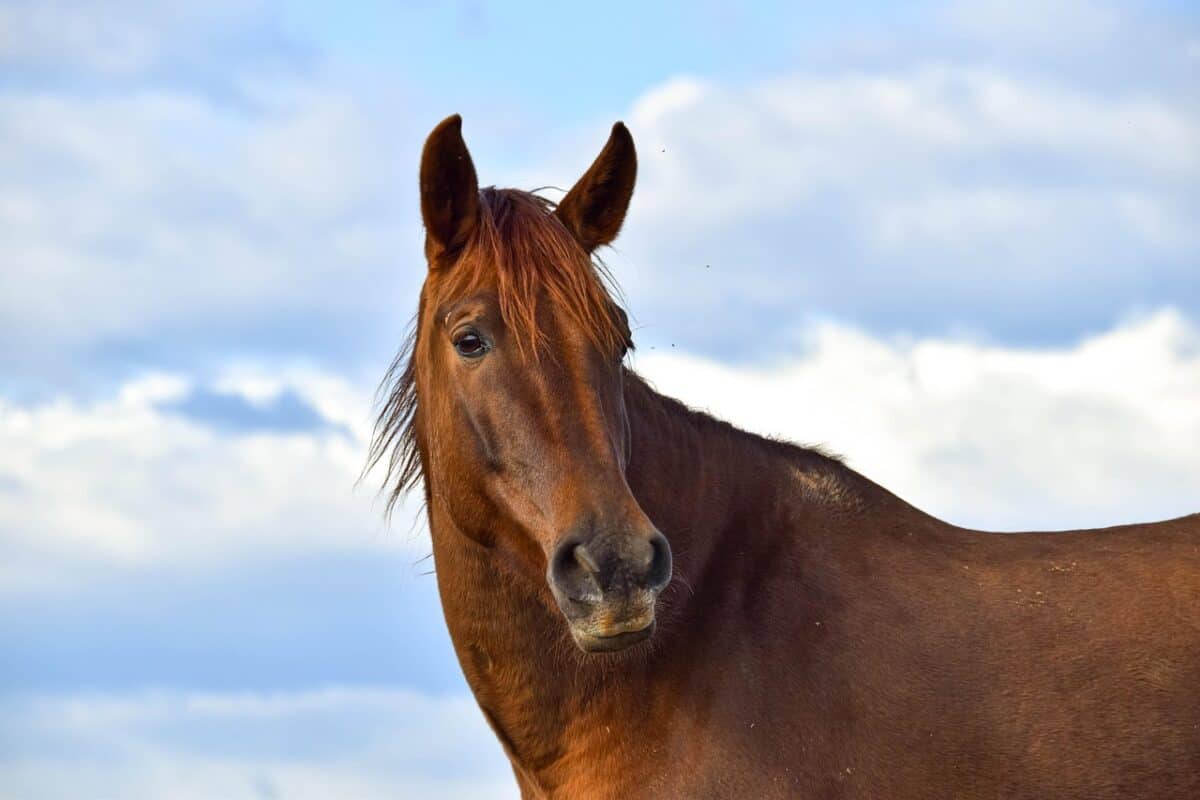Speed has always been a prized trait in horses throughout human history. From ancient warfare to modern racing, the ability of a horse to cover ground quickly has fascinated and served humanity for thousands of years. Today, certain breeds stand out for their exceptional velocity, combining genetic predisposition, physical attributes, and evolutionary advantages to achieve remarkable speeds. This comprehensive ranking explores the world’s fastest horse breeds, examining what makes these equine athletes capable of such impressive performance.
Thoroughbred: The Undisputed Speed King
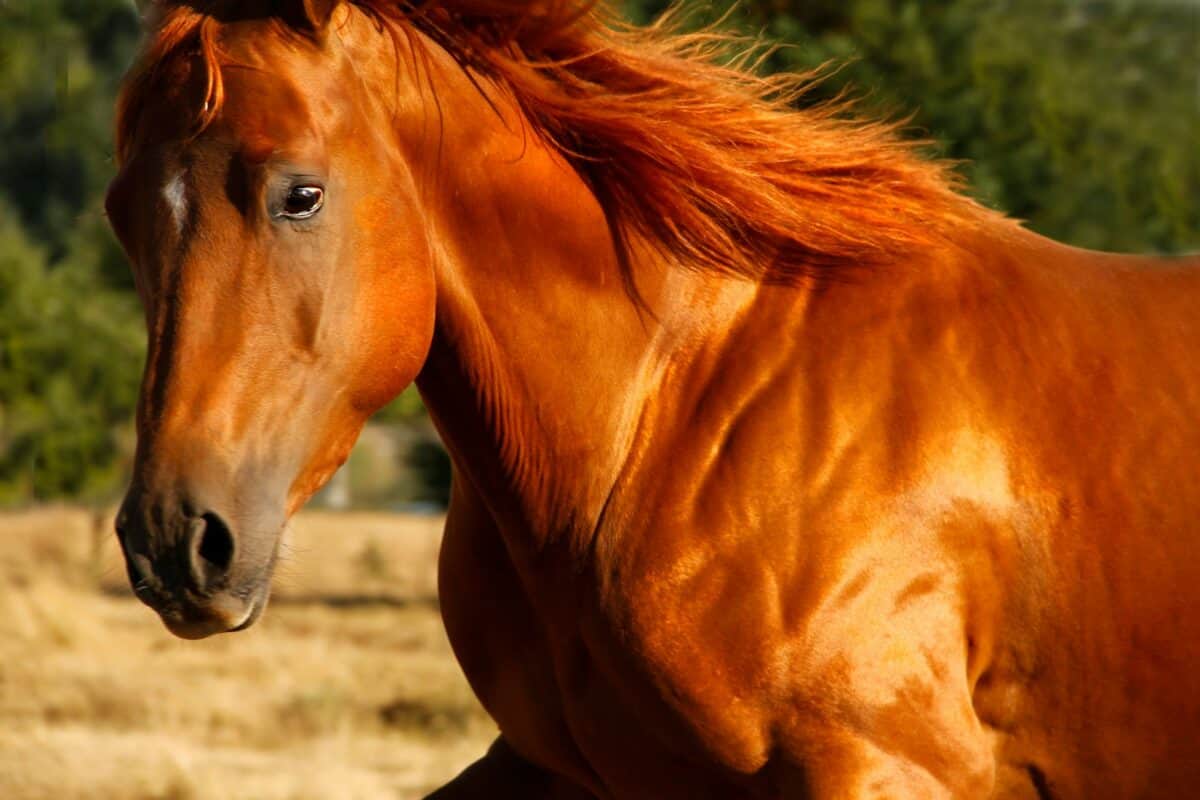
Topping the list is the Thoroughbred, widely acknowledged as the fastest horse breed in the world. These magnificent animals can reach speeds of 40-45 mph (64-72 km/h) at full gallop. The breed was developed in England during the 17th and 18th centuries by crossing native mares with imported Arabian, Barb, and Turkoman stallions. The resulting lineage created a horse with an unparalleled combination of speed, agility, and endurance. Thoroughbreds possess several physiological advantages that contribute to their velocity: long legs relative to body size, a deep chest allowing for greater lung capacity, and efficient muscle fiber composition optimized for explosive acceleration and sustained speed. The current world record for the fastest speed achieved by a racehorse is held by Thoroughbred Winning Brew, who reached 43.97 mph (70.76 km/h) over two furlongs at Penn National Race Course in 2008.
Quarter Horse: The Sprint Specialist

American Quarter Horses rank second in terms of pure speed capability, with the ability to reach speeds of 45-55 mph (72-88 km/h) over short distances. What makes Quarter Horses truly remarkable is not just their top speed but their acceleration—they can reach their maximum velocity within seconds of leaving the starting gate. Originally bred in colonial America by crossing English Thoroughbreds with native horses of Spanish descent, the Quarter Horse derived its name from its dominance in quarter-mile races. Their muscular hindquarters and powerful build make them explosive sprinters, and their compact, muscular frame contains a higher percentage of fast-twitch muscle fibers than most other breeds. While Thoroughbreds maintain dominance in longer races, no horse can match the Quarter Horse in a short, straight sprint.
Arabian: The Endurance Speedster

Arabian horses consistently rank among the world’s fastest breeds, capable of reaching speeds up to 40 mph (64 km/h). What distinguishes Arabians is their ability to maintain relatively high speeds over remarkably long distances. Developed in the harsh desert environment of the Arabian Peninsula more than 4,500 years ago, they evolved to travel great distances with minimal water and food. Arabians possess unique physiological adaptations that contribute to their speed and stamina: a higher density of mitochondria in their cells for superior energy production, larger nostrils and lung capacity relative to body size, and one fewer lumbar vertebra and pair of ribs than other breeds, resulting in a shorter back that enhances agility and speed. Their intelligence and willingness to work with riders also contribute to their racing performance, as they efficiently pace themselves even during long-distance competitions.
Standardbred: The Trotting and Pacing Champion

Standardbreds can reach speeds of 30-35 mph (48-56 km/h), making them the fourth fastest horse breed globally. Unlike the previous breeds that primarily gallop, Standardbreds excel at two distinct gaits: trotting and pacing. During pacing, the legs on the same side of the body move forward together; during trotting, diagonal pairs of legs move in unison. Developed in North America during the 19th century with Thoroughbred, Morgan, and other bloodlines, Standardbreds got their name from the “standard” time (2 minutes and 30 seconds) required to trot a mile for registration in the breed registry. Their muscular build, powerful shoulders, and strong hindquarters allow them to maintain these specialized gaits at remarkable speeds. The current world record for the fastest mile by a Standardbred pacer is 1:46.0, set by Always B Miki in 2016.
Akhal-Teke: The Ancient Velocity Expert
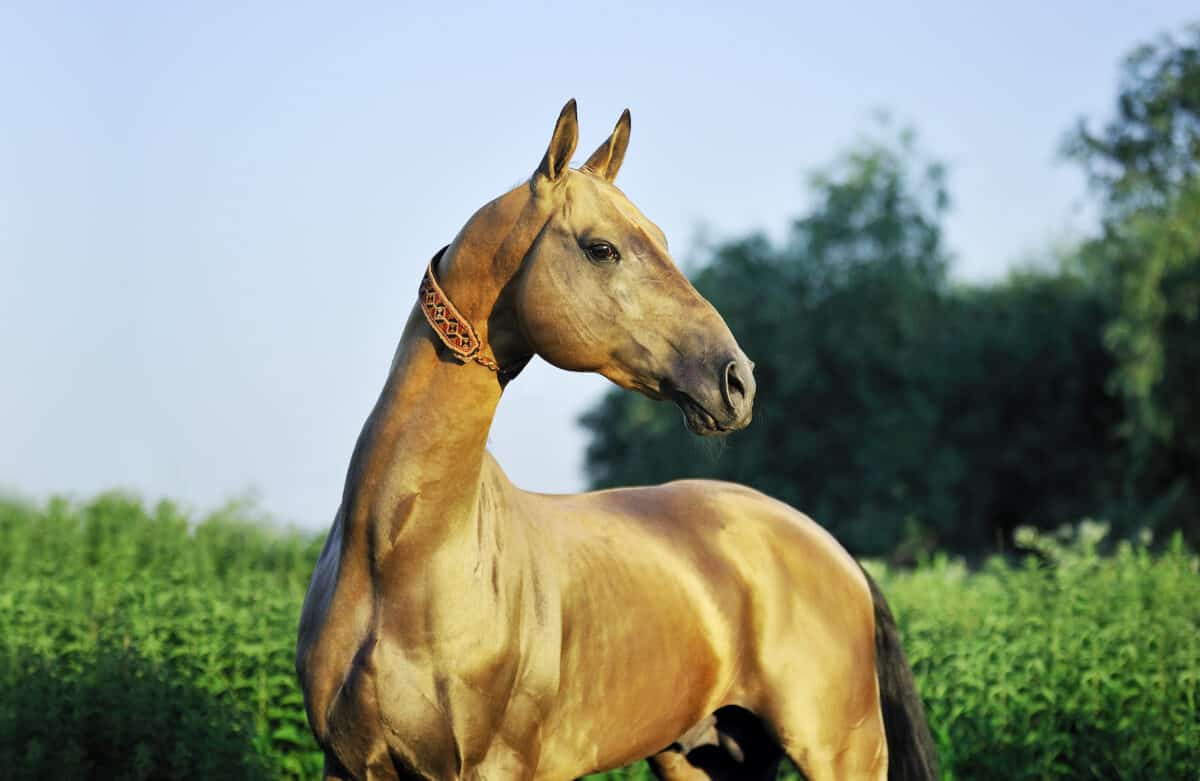
The Akhal-Teke, one of the world’s oldest surviving horse breeds, ranks fifth on our list with top speeds approaching 35-40 mph (56-64 km/h). Originating from Turkmenistan over 3,000 years ago, these horses evolved in a harsh desert environment that necessitated both speed and endurance. The breed’s most distinctive features include an elegant, elongated frame, minimal body fat, and lean muscles that contribute to their efficiency of movement. Their slender build and unique muscular structure allow for fluid, floating gaits that cover ground quickly while conserving energy. Akhal-Tekes have a higher proportion of slow-twitch muscle fibers compared to many other fast breeds, allowing them to sustain speed over longer periods. This adaptability made them prized mounts for ancient warriors and messengers who needed to cover vast distances quickly across diverse terrains.
Andalusian: Spain’s Swift Heritage

The Andalusian, also known as the Pure Spanish Horse or PRE (Pura Raza Española), can reach speeds of around 35 mph (56 km/h), placing it sixth in our ranking. Originating in the Iberian Peninsula centuries ago, the Andalusian was developed for versatility, including speed for warfare and ceremonial purposes. Their powerful, compact build combines strength with agility, allowing them to achieve impressive speeds despite not being primarily bred for racing. Andalusians possess natural collection and balance, with strong hindquarters that provide powerful propulsion. Their well-defined musculature and elevated, expressive movement contribute to efficient ground coverage. While not as fast as Thoroughbreds in a straight gallop, their agility and maneuverability allow them to maintain higher speeds on varied terrain and in changing conditions, making them historically valuable cavalry mounts.
Appaloosa: The Spotted Speedster

Appaloosas can reach speeds of approximately 30-35 mph (48-56 km/h), placing them seventh on our list of fastest horse breeds. Developed by the Nez Perce people of the Pacific Northwest United States, Appaloosas were bred for versatility, including the speed necessary for hunting and warfare. Their distinctive spotted coat pattern makes them instantly recognizable, but it’s their physical capabilities that earn them a place among the fastest breeds. The modern Appaloosa has benefited from crossbreeding with Thoroughbreds and Quarter Horses, enhancing their natural speed. They typically possess a strong, compact body with well-muscled hindquarters that provide excellent acceleration. Their intelligent, willing temperament also contributes to their performance, as they readily respond to rider cues in competitive situations.
Mustang: Wild-Born Speed
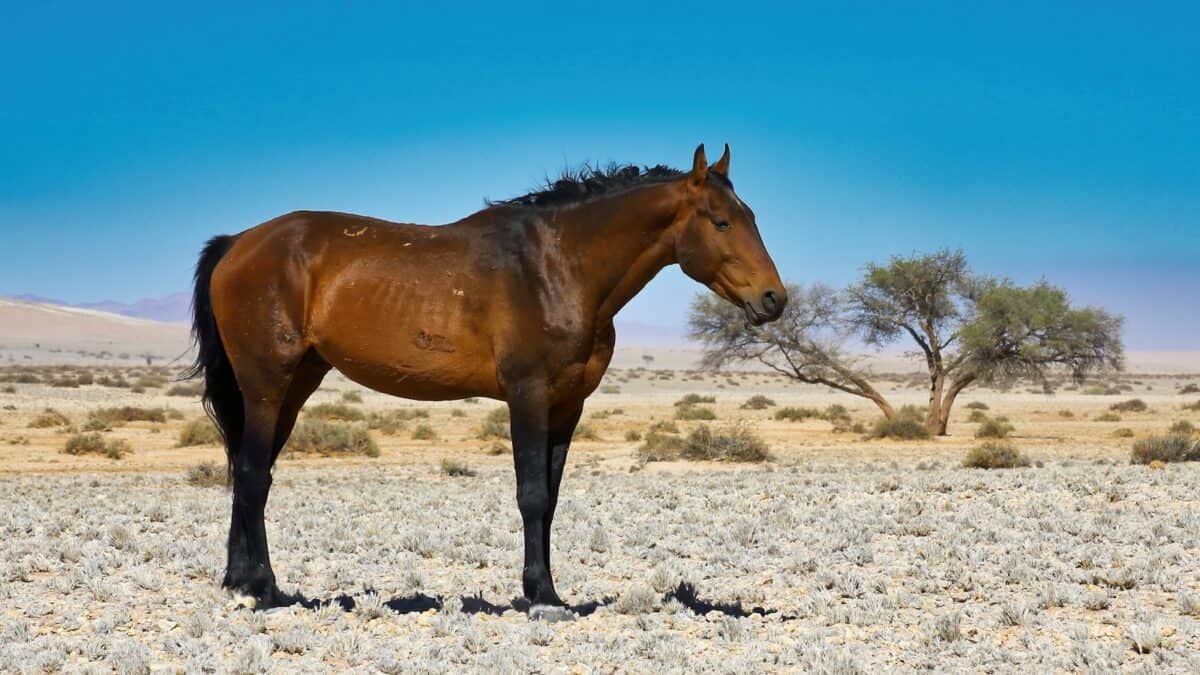
American Mustangs can reach speeds of approximately 25-30 mph (40-48 km/h), earning eighth place in our ranking. As descendants of horses brought to the Americas by Spanish conquistadors in the 16th century, Mustangs have been shaped by natural selection in the wild, where speed is essential for evading predators and competing for resources. The challenges of feral living have produced a horse with exceptional stamina, surefootedness, and efficient movement. Their relatively small size (typically 14-15 hands high) belies their athletic ability and explosive speed. Mustangs possess dense bone structure, hard hooves, and efficient cardiovascular systems that allow them to maintain moderate speeds over incredibly long distances. Their natural endurance and hardiness make them particularly adept at maintaining speed across rough terrain where domesticated breeds might struggle.
Morgan: America’s Versatile Speedster

The Morgan horse can reach speeds of 20-30 mph (32-48 km/h), placing it ninth in our ranking. This distinctively American breed descended from a single foundation sire, a stallion named Figure (later called Justin Morgan after his owner) in the late 18th century. Despite not being specifically bred for racing, Morgans possess remarkable speed alongside their versatility. Their compact, muscular build features strong legs, a deep chest, and powerful hindquarters that contribute to their acceleration capabilities. Morgans typically possess exceptional stamina, allowing them to maintain moderate speeds over extended periods. Their willing temperament and intelligence make them responsive to riders in competitive situations. While they may not match Thoroughbreds or Quarter Horses in maximum velocity, their combination of speed, endurance, and versatility has made them successful in various timed disciplines including competitive trail riding and endurance events.
Physical Attributes Contributing to Equine Speed
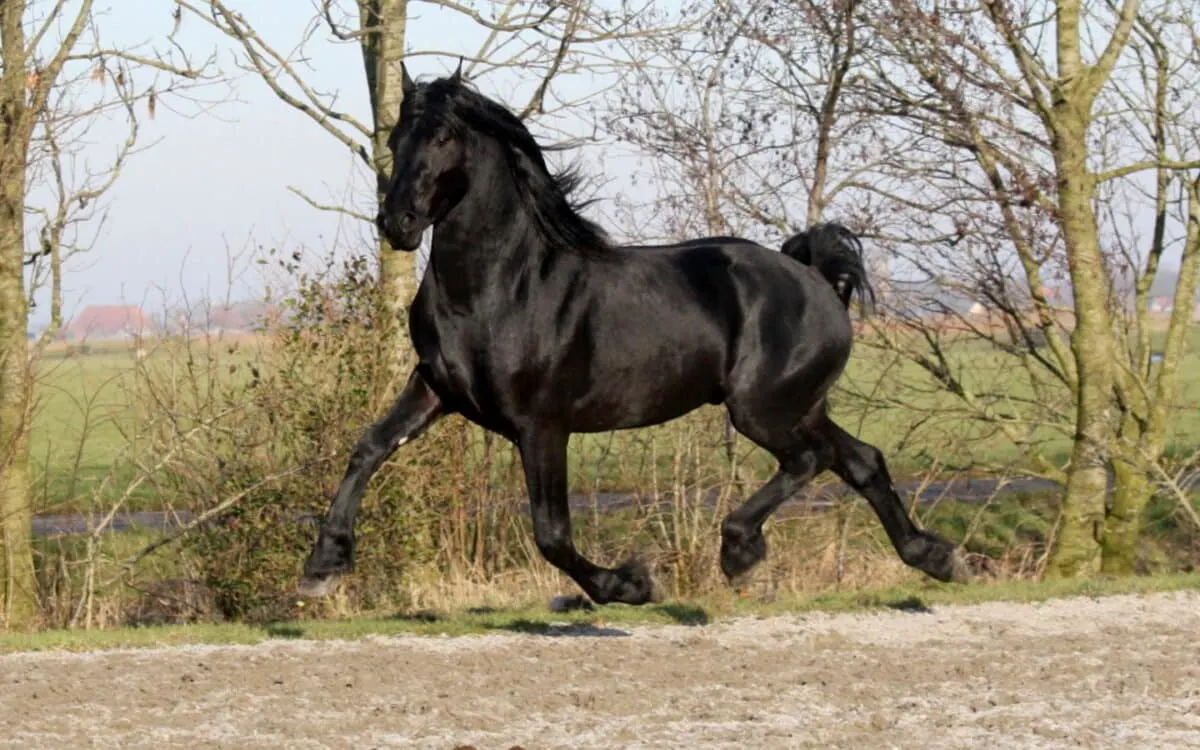
Several physical characteristics determine a horse’s speed potential regardless of breed. Longer legs relative to body size provide greater stride length, allowing the horse to cover more ground with each step. Muscle fiber composition plays a crucial role: fast-twitch fibers enable explosive acceleration, while slow-twitch fibers support endurance. Cardiovascular efficiency, including heart size and lung capacity, determines how effectively oxygen is delivered to working muscles during exertion. Skeletal structure significantly impacts speed—horses with more angulated shoulders and hindquarters generally achieve greater extension in their stride. Body proportion is equally important; an optimal balance between leg length and back length creates mechanical efficiency in movement. Even seemingly minor factors like hoof size and shape affect a horse’s speed by influencing stride mechanics and ground contact. These physiological factors work in concert, creating the remarkable range of speeds observed across different horse breeds.
Training and Conditioning for Maximum Speed

Even the most genetically gifted horses require proper training to reach their speed potential. Professional racehorse training typically combines several methodologies: interval training alternates between high-intensity work and recovery periods to build both speed and stamina; hill work develops the powerful hindquarters necessary for acceleration and sustained speed; and specialized breathing exercises maximize respiratory efficiency. Proper nutrition is essential, with precise caloric intake and balanced nutrients supporting muscle development and energy production. Strategic rest periods are equally important, allowing for recovery and preventing injuries that could compromise speed. Progressive conditioning is critical—trainers gradually increase workout intensity over months or years to develop the horse’s full potential without causing breakdown. Mental conditioning also plays a vital role, as horses must learn to maintain focus and competitive drive when running at top speeds. The combination of genetic potential and optimal training determines which horses ultimately become the fastest of their breed.
Modern Speed Measurement and Racing Technologies
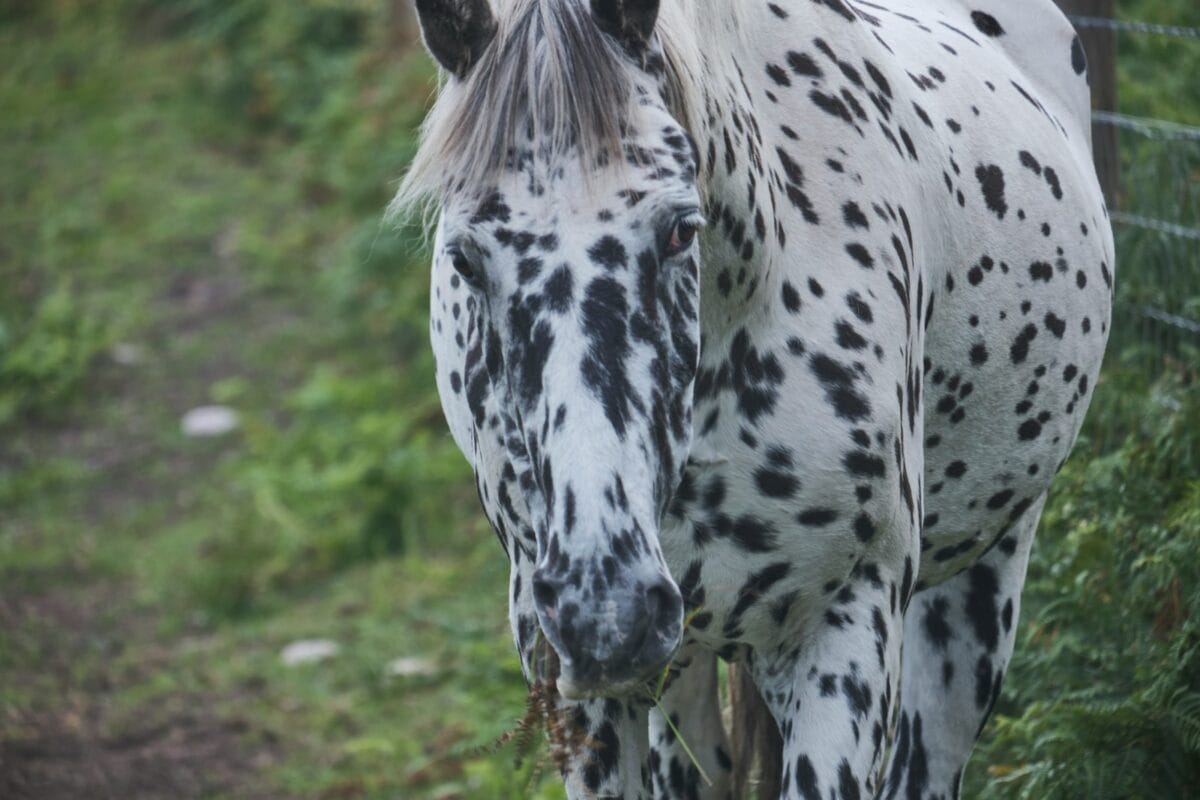
Advances in technology have revolutionized how equine speed is measured and analyzed. GPS tracking systems now provide precise data on velocity, acceleration, deceleration, and stride patterns throughout races or training sessions. High-speed cameras operating at hundreds of frames per second allow trainers to analyze every nuance of a horse’s movement, identifying inefficiencies invisible to the naked eye. Force plates and pressure sensors measure the impact forces on each hoof, helping to optimize stride mechanics and prevent injuries. Wearable biometric sensors monitor heart rate, respiratory rate, body temperature, and even blood oxygen levels during exercise, providing insights into a horse’s physiological response to speed work. Computer modeling can predict how conformational changes might affect maximum velocity, helping breeding programs select for optimal speed characteristics. These technologies have contributed to the gradual improvement in recorded speeds across many breeds, as trainers can now identify and address even minor limitations to performance with unprecedented precision.
Conclusion: The Fascinating World of Equine Speed
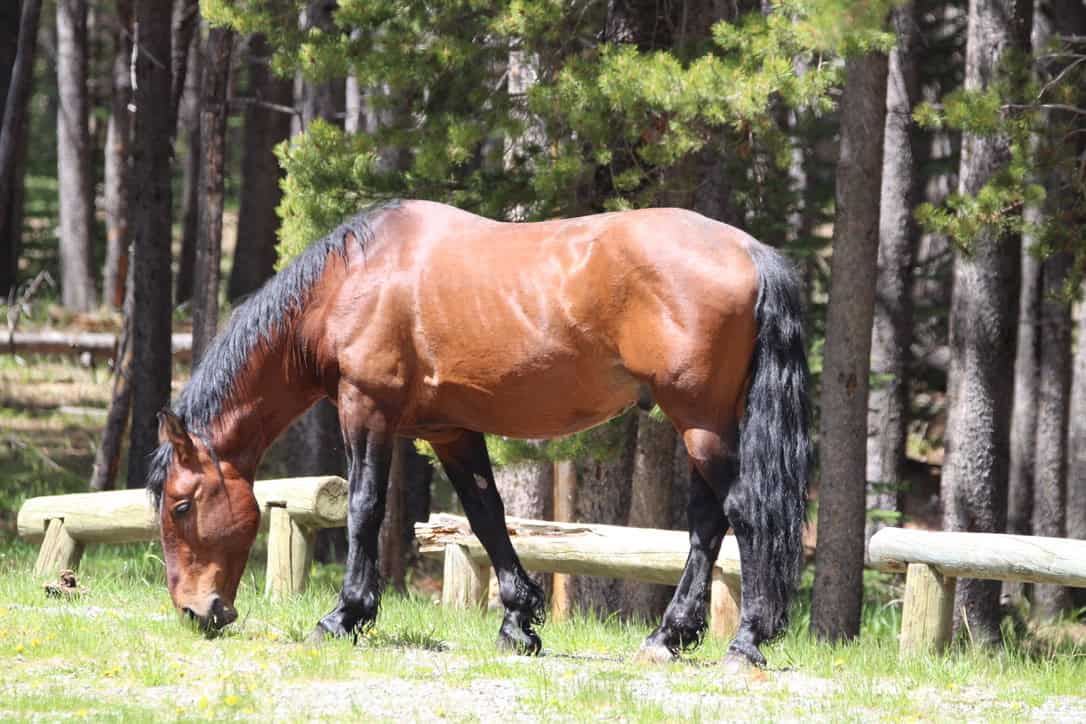
The remarkable speed capabilities of these horse breeds represent the culmination of thousands of years of both natural selection and human-directed breeding. While the Thoroughbred remains the recognized velocity champion in sustained racing, each breed on this list possesses unique adaptations that make them exceptional athletes in their specialized disciplines. Understanding the factors that contribute to equine speed—from physiological adaptations to training methodologies—provides valuable insights into both evolutionary biology and human-animal partnerships. As technology continues to advance, we may see even greater achievements in equine speed, though we may be approaching the biological limits of what is physically possible for these magnificent animals. The quest for speed has shaped horse breeding throughout human history, and these fastest breeds stand as living monuments to that enduring partnership.
- The Fastest Horse Breeds in the World — Ranked - August 12, 2025
- How Sharks Use Electroreception to Hunt in Murky Water - August 12, 2025
- How Rhinos Use Their Horns (It’s for More Than Defense) - August 12, 2025

